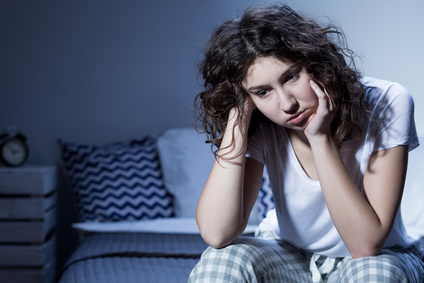📚How is a Sleep Study Done?
 Issues with sleep are tremendously common. Unlike the unmistakable symptoms of chronic diseases that prompt a quick visit to healthcare providers, signs suggesting a sleep disorder are often overlooked. Many individuals proceed through life with scant awareness of sleep disorders. Even when people recognize symptoms that might indicate they have sleeping issues, they frequently downplay their significance.
Issues with sleep are tremendously common. Unlike the unmistakable symptoms of chronic diseases that prompt a quick visit to healthcare providers, signs suggesting a sleep disorder are often overlooked. Many individuals proceed through life with scant awareness of sleep disorders. Even when people recognize symptoms that might indicate they have sleeping issues, they frequently downplay their significance.
Now, how do you establish that you have a sleeping problem? Simple, you need to get a sleep study test done on you. Again you may ask, what exactly is a sleep study test? And how is a sleep study done? And what should I expect during the sleep study test? Read on to get your questions answered.
What is a Sleeping Disorder or Problem?
A sleeping disorder is a persistent, abnormal pattern in the way you sleep that alters or affects your day to day life’s activities. Sleeping disorders affect over 50 million adults living in the US.
Common Sleeping Problems
Insomnia
This is a sleep condition that is characterized by difficulty in falling asleep or not being able to get sleep altogether at night. The condition must be voluntary and chronic for it to be ruled out as insomnia.
Narcolepsy
Persons with this condition are very sleepy during the day. This is despite the fact that they had a relatively good sleep at night. They are known to suddenly fall asleep during the day, even in places where they are required to be very attentive.
Sleep Apnea
Individuals with the disorder experience a break in their breathing pattern while they are asleep. The condition is often associated with persons who have chronic snoring problems. Your partner or roommates will often express their displeasure with the noise you make in your sleep. They may be helpful in explaining to the doctor the details of your symptoms.
Restless Leg Syndrome
People with this condition move their foot or feet involuntarily in their sleep. The uncomfortable sensation that causes them to move their feet periodically always makes them to wake up suddenly before they plunge back into their sleep.
What is a Sleep Study Test?
Also called a Polysomnography, this is a test used to establish your heart rate, blood pressure, brain waves, and leg movements in a bid to check for any sleep disorder. A casual visit to the doctor is not enough to help them diagnose your sleeping problem, if you have any.
This is because sleep involves your brain and other senses. Therefore, an overnight stay at the sleep lab will give the doctor or the technologist ample time to make credible conclusions on your condition.
Who Should Undertake a Sleep Study Test?
- If you can identify both insomnia and narcolepsy symptoms that cause worry and anxiety, you need to seek medical help
- For sleep apnea and the restless leg syndrome, you may need someone who shares a room with you to point out the disorder at hand. Do not take their observations lightly, seek immediate medical attention
- People who have a chronic snoring problem
- When you continually experience fatigue after a substantive period of sleep
Even with outright signs and symptoms of any of these sleeping disorders one is strongly advised to first consult with their general practitioner or visit a sleep specialist. This is because the study test is a medical procedure that should only be authorized by trained medical personnel.
How do You Prepare for a Sleep Study Test?
First of all, you need to let your doctor know of any medical history, especially one related to sleep and brain conditions. Secondly, mention any medications you may be taking. Some drugs could alter your sleep patterns and therefore give inaccurate results. You may need to stop them for a period of time before you undertake the sleep test. You may also need to stay away from caffeinated drinks one day prior to the test because they too have the ability to alter your sleep pattern.
Eat a regular portion of your evening meal before you’re set out for a night at the sleep clinic. Also, carry your pajamas to the sleep clinic and any other stuff you typically use for the night so you make your sleep-test-night as natural and as comfortable as possible. Arrive an hour or two before your scheduled time. Walk around and get a little familiar with the environment. This will help you ease up before the scheduled time for your sleep study test.
What to Expect During a Sleep Study Test
On arrival for your overnight sleep study test, a polysomnographic technologist will receive you. After going over your paperwork, they will then ask you to fill out forms for admission. He will brief you on what the study entails and what to expect. He will also test and document some of your vital signs before and during your overnight sleep.
How is a Sleep Study Test Done?
Neither needles or scalpels are involved, so relax. You don’t have to freak out; the procedure is purely non-invasive.
- The first process involves small wire cup electrodes that are attached to your head. This helps to measure the activities of your brain. This exercise will help the technologist to not only establish if you are sleeping but also at what stage of sleep you are.
- Using a tape, another set of wire electrodes are stuck on your face next to your eyes and chin to monitor the activities of your muscles. They help the technologist determine the slightest eye movement which enables him to verify the stage of sleep the patient is at.
- The electrodes stuck on the chin help to pick out the slightest mouth activities. Therefore they assist in determining any teeth grinding of the patient in his sleep.
- There is also a wire electrode taped on each leg. This helps the technician to detect the slightest muscle movement on the limbs.
- To measure the strength of your breathing, two elastic bands are tied round your waist and chest. A monitor is taped on your finger to check oxygen levels in your body as you sleep.
- A clear plastic tube and a heat monitor are used to measure your breathing pattern. Monitors are also taped to your chest to determine your heart rate.
- For snoring, a small microphone is placed near your throat to pick out the slightest sound.
When the technologist is done with installing these equipment on you he resorts to a different room from where he will be monitoring the devices he has set on you. After activating them, he gives you an okay to sleep for the night.
What Happens After a Sleep Study Test?
The next morning, the sleep technician will wake you up in real time and remove the tapes and machines on you. You may freshen up in their washrooms and head to work, home, or wherever. The results are analyzed against your sleep history and are often ready after approximately two weeks. They are then sent to the doctor or to your preferred address. You then get to discuss the findings with the doctor at a prearranged appointment.
The Bottom Line
I hope this article has helped you find the answer to the puzzling question; how is a sleep study done? In addition, I hope you’ve captured some basic knowledge on sleep disorders. Sleep problems could cause serious health risks if left unchecked. Timely treatment of sleep disorders could save your body from developing life-threatening diseases such as depression, diabetes, hypertension, stroke, and many others. Feel free to ask any questions or feedback in the comments section below.






